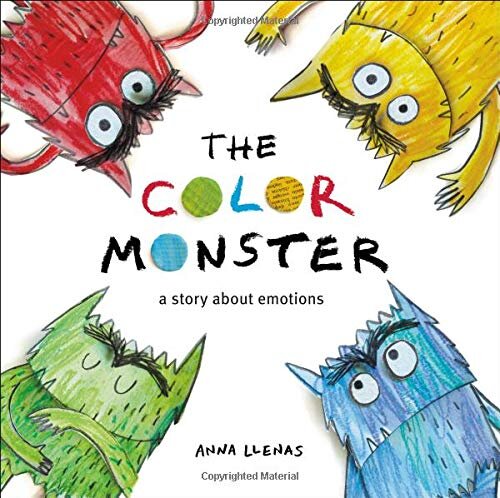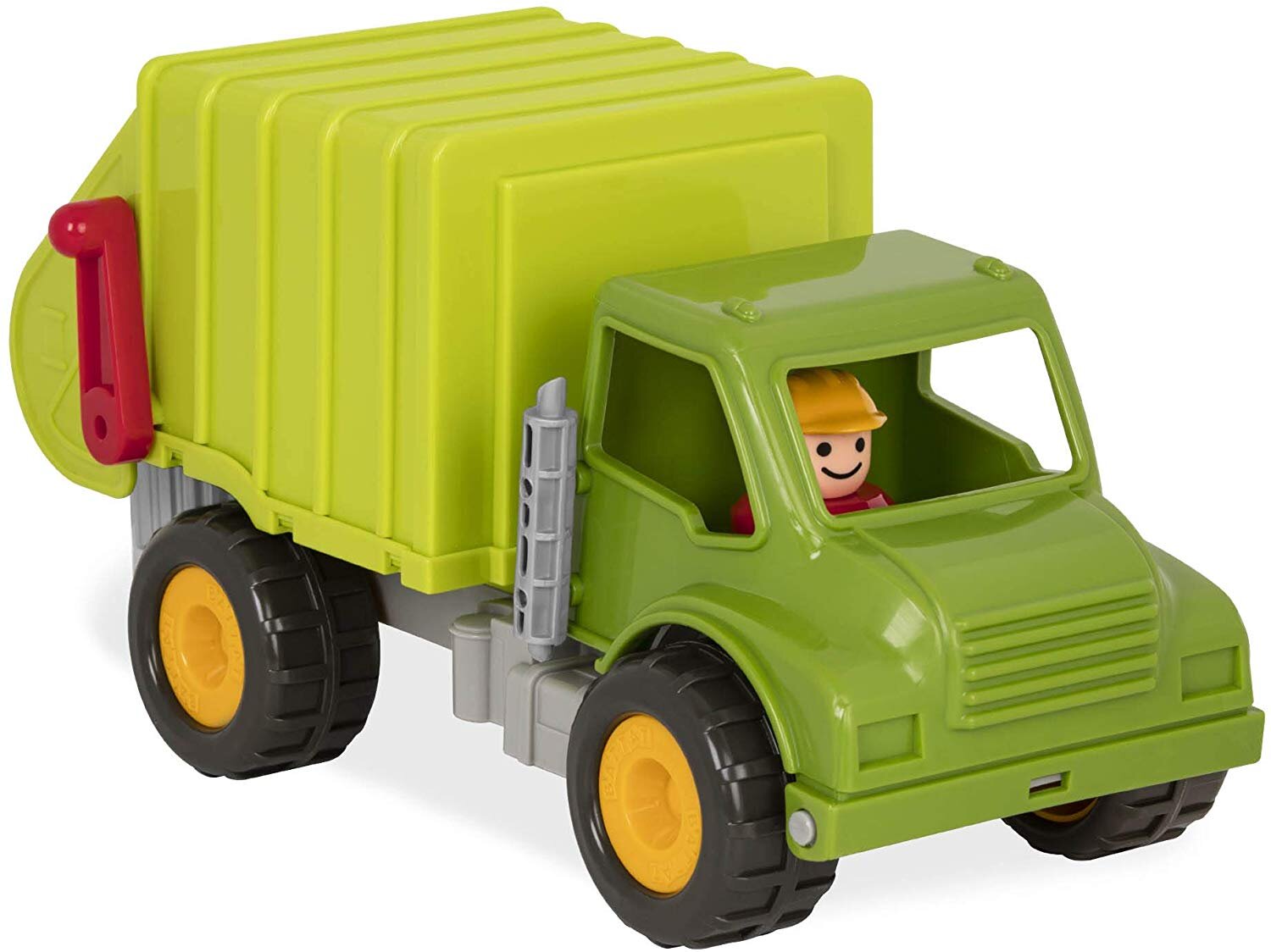10 Stocking Stuffer Ideas to Promote Early Language Development
It’s that time of year again! We’ve been busy putting together our 2019 list of stocking stuffers available on amazon.ca. This list of smaller Christmas present ideas has been chosen to provide great speech and language learning possibilities for toddlers, preschoolers and early school aged children:
The Color Monster: A Story About Emotions
Is your little one exploring ways to express how they’re feeling? This book is AWESOME for developing emotional literacy. The adorable monster in this book explores a range of emotions, each colour-coded to help young children make associations between feelings and an associated colour. This book does a great job of exploring situations that make the monster feel various emotions, but parents can extend the learning by discussing situations that make them have those feelings, and help their children to come up with situations that would make them feel those emotions as well.
Hide & Seek Farm
While this toy is recommended for ages 3-5, the easy to open doors and chunky magnets make this toy accessible even to younger toddlers (~18 months+). One of our favourite things about this toy is that many of the animals can be placed behind different doors interchangeably, which allows for guessing games as well as decision making on characteristics other than simply shape, unlike traditional puzzles. We love to use this toy to support young children in making inferences before they open a door (e.g. I think there’s an animal behind this door that says ‘moo’! Who could it be?), to make decisions about where the animals should go based on habitat (e.g. which one should we put in the mud, in the hay etc.) as well as for pretend play with older children.
Chatter Telephone
This classic toy is an oldie but a goodie. We love toy telephones for a number of things. First, we love the turn-taking possibilities that even infants and young toddlers can participate in (e.g. you pretend to talk on the phone and then they take a turn talking into theirs). Second, we love the way toy phones allow young children to explore taking on different roles (E.g. first talking in their voice and then pretending to be daddy in their response). We also find that toy phones can also help some of our children who are developing imitation skills to feel less inhibited than they do without the phone as a prop. For some kids, holding the phone up to their ears allows them to explore sounds they might otherwise be willing to try.
Spin & Swipe Cash Register Playset
Another classic toy, this is one of our favourites for pretend play and turn-taking. We like this particular version because it has both the option of paying with coins and with a credit card, the method of payment our kiddos are probably more used to seeing modelled. The pretend play possibilities with a cash register are endless when paired with your children’s other toys or even just objects in your home. We like to encourage exploration of language by asking to purchase things by category (e.g. hmm I’m looking to buy some fruit. Do you have any fruit to sell?), by function (e.g. I’m looking for something that I can cut with. Do you sell anything like that?) or other characteristic (e.g. I’d like to buy something red. Do you sell anything red?).
Bath Crayons
What’s better than crayons? Crayons you can use in the bath! The language possibilities with these are as vast as your imaginations. Can you draw an animal that lives in the water? How about something that we eat? Experiment with different voices and pretend actions while you draw together- the world is your oyster!
Monkey Around
This game is a riot and fantastic for practicing so many language skills with preschoolers. Older kids will have fun practicing following your silly directions (e.g. can you hop up and down on one foot), while younger children will benefit from learning the action words (verbs) for different actions. Children who are still learning to imitate will get a hoot out of trying to copy as you do the silly actions yourself. Try adding sound effects to your actions to extend the imitation possibilities.
I Spy - Everything!: A Fun Guessing Game
This ‘I Spy’ book is fantastic for kids who are starting to identify first sounds. Each page has one picture starting with your target sound, with distractor words that start with other sounds to make the task trickier. For kids whose skills are still emerging, talk about the items on the page out loud while exaggerating their first sounds to help them to hear the first sound in each word (e.g. “We are looking for a word that starts with ‘ffffff’. I see a “chhhhhair” does “chair” start with ‘ffff’? No? How about ‘ffffffox’. Does that start with ‘ffff’? Yes!). For kids who still find this too difficult, give them other clues to help them find the item you’re looking for (e.g. Hmmm I see something that starts with ‘ffff’. It’s an animal that is red and has a long tail. A fox? Yes! Ffffox starts with ‘f’!).
Garbage Truck
We love this garbage truck for all of its simple but functional moving parts. With a lift at the back that goes up and down to dump the garbage into the truck, two bins that can go on and off of the lift and a driver who can go in and out of the cab, there are lots of opportunities for pretend play and early language exploration. Try playing around with sentences containing verbs such as ‘dump’, ‘put’, ‘drive’ and ‘stop’, as well as early concepts such as ‘full’, ‘empty’, ‘in’, ‘out’ and ‘more’.
Baby Bee Hive
This simple toy is great even for young infants, but fun for kids throughout the preschool period. With younger infants and toddlers, try to encourage imitation of sounds such as ‘bzzzz’, ‘uh oh’ (if the bee goes in the wrong hole), ‘bonk’ (if the bee doesn’t quite get into the hole on the first try) and even try pretending to be bees yourselves. For older toddlers, help them to explore the concepts of ‘same’ and ‘different’ while they try to match the colours up, as well as discussing the colours themselves. Experiment with descriptive language as you talk about how the bees look (e.g. I see a red bee with black stripes. Where does he go?), as well as reinforcing concepts such as ‘in’ and ‘out’, ‘front’ and ‘back’, ‘top’ and ‘bottom’).
Pizza Pizza!
This game is recommended for kids aged 3-7, but in our experience, even two year olds can play this game with adult help. Use this game to practice finding ‘same’ colours and shapes as well as practicing the colour and shape vocabulary themselves. Talk about the items that are on each of the pieces that go onto your pizza (E.g. my piece has peas and corn on it). Work together to figure out which ones should go on the pizza (ie. those that have food on them) and those that shouldn’t (those with bugs and other icky creatures on them!). Older kids will be able to discuss how certain things might taste (e.g. my piece has pineapple. Pineapple is sweet).













